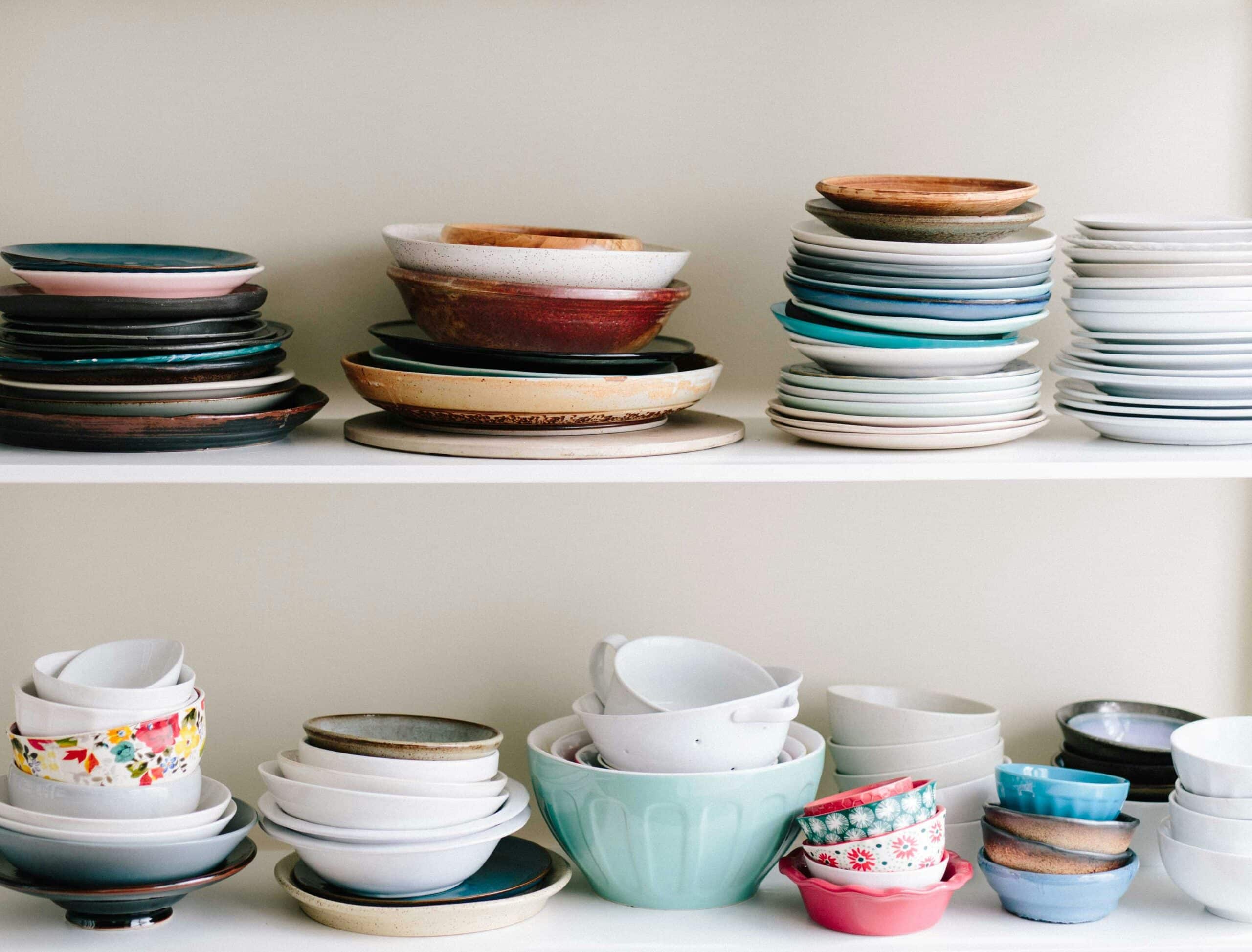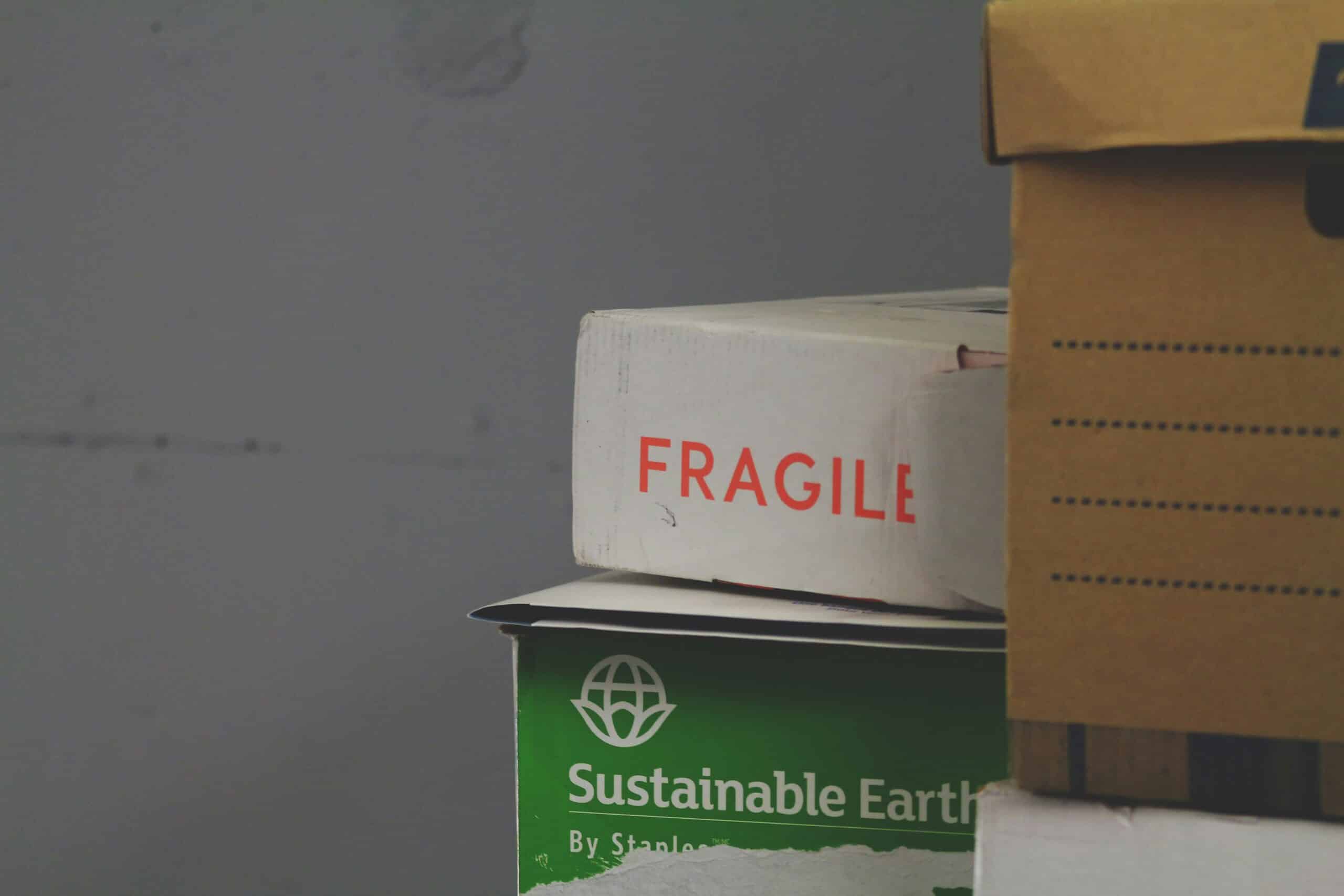Figuring out how to pack fragile items for moving can feel overwhelming. Fragile items like china, crystal, and family heirlooms are particularly vulnerable, with glassware and ceramics being the most commonly damaged items. Nobody wants their favorite dishes, glassware, or family heirlooms to arrive broken and in pieces. The good news is that with the right tools and a little know-how, you can pack these items safely and stress-free.
In this guide, we’ll walk you through simple, effective steps to protect your fragile belongings during a move.
Using the Right Packing Supplies
The average household move requires approximately 30-40 boxes, with about a quarter of those needing to be specifically designated for fragile items. Professional movers recommend investing at least $100-150 in quality packing supplies for a typical three-bedroom home’s worth of fragile items.
Before you start packing, make sure you have the right materials. Using strong, protective supplies will keep your fragile items safe.
Essential Supplies:
Moving companies recommend medium-sized boxes (18” x 18” x 16”) as the ideal size for most fragile items, as larger boxes can become too heavy, and smaller ones may not provide adequate cushioning.
- Sturdy boxes: Choose boxes in different sizes to fit your items. A new, double-walled box can support up to 80 pounds, compared to just 30-40 pounds for a used single-wall box. Avoid using old or weak boxes that might collapse.
- Bubble wrap: Available in various bubble sizes (3/16”, 5/16”, and 1/2″ are most common), with larger bubbles providing better protection for heavier items. Great for adding some cushion to delicate objects like glass or ceramics.
- Packing paper: Professional-grade white packing paper comes in 25-pound bundles, which is typically enough for a kitchen’s worth of fragile items. Use this to wrap items and fill in gaps in boxes to prevent movement.
- Packing tape: Look for tape rated at least 2.6 mil thickness with 25 pounds per inch strength. Strong tape keeps your boxes securely closed.
- “Fragile” labels: Mark your boxes clearly to ensure careful handling.
Specialty Packing Supplies:
Investing in specialty supplies can reduce damage rates. For certain fragile items, regular packing materials may not be enough. Consider these extra materials:
- Dish and glass dividers: Available in adjustable sizes from 4” to 12” tall, these cellular dividers can protect up to 12 glasses or dishes per box. They’re typically made of corrugated cardboard with a 200# test strength rating.
- Foam corner protectors: These L-shaped protectors come in various thicknesses (1”, 2”, and 3” are standard) and can withstand up to 40 pounds of impact. Perfect for mirrors, artwork, and framed photos.
- Moving blankets: Professional-grade moving blankets weigh about 6-7 pounds each and measure 72” x 80”. Ideal for protecting large or heavy fragile items like furniture or antiques.
Step-by-Step Guide to Packing Fragile Items for Moving
1. Wrap Items Carefully
Professional packers estimate it takes about 3-4 sheets of packing paper per plate and 2-3 feet of bubble wrap for each drinking glass. Start by wrapping each item in bubble wrap. For extra protection, add a layer of packing paper over the bubble wrap. Be sure to cover the entire item, especially the edges and corners. A properly wrapped wine glass should have a diameter about twice its original size when finished.
2. Cushion the Box
Industry standards recommend a minimum 3-inch cushioning layer at the bottom of any box containing fragile items. This typically requires 4-5 sheets of crumpled packing paper or about 2 cups of foam peanuts for a standard-sized box. Before placing items in the box, add this layer of crumpled packing paper or foam peanuts to the bottom. This creates a soft base to absorb shocks.
3. Pack Heavier Items First
A properly packed box should weigh no more than 30-40 pounds when full. Place heavier, sturdier items at the bottom of the box. For example, place ceramic plates at the bottom and lightweight wine glasses on top. Lighter, more delicate items should go on top. This prevents heavier items from crushing fragile ones.
4. Fill Empty Spaces
Professional movers use the “shake test” – if you can hear or feel items moving when you gently shake the box, you need more filling material. After placing your items in the box, fill any gaps with packing paper, bubble wrap, or foam peanuts. A typical medium-sized box requires about 1-2 pounds of packing paper for proper void fill.
5. Seal and Label the Box
Use at least three strips of tape across all seams, with each strip being at least 2 inches wide and 20 inches long. Once the box is packed, seal it with strong packing tape. Make sure all seams are covered. Finally, label the box as “FRAGILE” on all sides so movers know to handle it carefully. Pro tip: Mark arrows indicating “THIS SIDE UP” to ensure proper orientation.
Special Tips for Unique Fragile Items
Packing Glassware and Dishes
Statistics show that stemware and fine china are among the most frequently damaged items in moves, with a breakage rate of up to 10% when improperly packed. Here’s how to protect them:
- Wrap each glass and dish individually with bubble wrap. Wine glasses typically need 24-30 inches of bubble wrap per item.
- For dishes, pack them vertically (like a stack of records) instead of laying them flat. This position can greatly reduce the chance of breaking.
- Use dividers or place crumpled packing paper between each dish. Professional-grade dish dividers cost about $8-12 per box but can protect up to $500 worth of dishes.
Protecting Mirrors and Artwork
Large mirrors and artwork (over 3′ x 4′) have a higher chance of damage during moves compared to smaller pieces. Take these precautions:
- Cover the edges with foam corner protectors. Standard corner protectors extend 4-6 inches along each edge.
- Wrap the entire piece in a moving blanket or bubble wrap. Use at least two layers for items valued over $500.
- Transport mirrors and artwork upright, not flat, to reduce the chance of damage. Professional art shippers always keep these items at 70-90 degree angles.
Packing Antiques and Heirlooms
Insurance claims data shows that inadequately packed antiques are much more likely to be damaged during a move than properly packed items. Here’s what to do:
- For very fragile antiques, double-box them using a 2-inch buffer zone between boxes. Place the item in a smaller box with padding, then put that box inside a larger one with extra cushioning.
- If your antiques are very valuable (over $1,000), consider getting professional help to pack them safely. Professional packing services typically cost 10-15% of the item’s value but reduce damage risk by up to 90%
What Not to Do When Packing Fragile Items for Moving
Moving company data reveals that these common mistakes account for the majority of damage claims:
- Don’t use weak boxes: Old boxes lose up to 60% of their strength after one use. Old or flimsy boxes can break under pressure. Use new, sturdy ones.
- Don’t skip labeling: Items in unlabeled boxes are three times more likely to be damaged. Forgetting to label boxes as “FRAGILE” increases the risk of mishandling.
- Don’t overpack boxes: Boxes weighing more than 40 pounds have a much higher chance of being dropped. Avoid making boxes too heavy, as they can be hard to carry and may crush items at the bottom.
- Don’t use newspaper for delicate items: Newspaper ink can take up to 6 months to fully fade from stained surfaces. The ink can smudge or stain surfaces. Use clean packing paper instead.
Should You Use Professional Packing Services?
Professional packing services typically cost $60-80 per hour, with most homes requiring 4-6 hours of packing time for fragile items. If packing fragile and valuable items feels stressful or time-consuming, hiring professional movers might be the right choice. Here’s why:
- Expertise: Professionals undergo training specifically for fragile items and know the best ways to pack delicate items.
- High-quality materials: Movers often have access to specialty packing supplies that will cost you more if purchased retail.
- Peace of mind: Many moving companies offer insurance to cover damage during the move, typically at a rate of 60 cents per pound or full replacement for an additional fee.
Conclusion
Knowing how to pack fragile items for moving doesn’t have to be stressful. With the right supplies, careful packing techniques, and a little planning, you can protect your belongings and ensure they arrive safely. If you need help, don’t hesitate to contact a professional moving company for expert packing and moving services.









